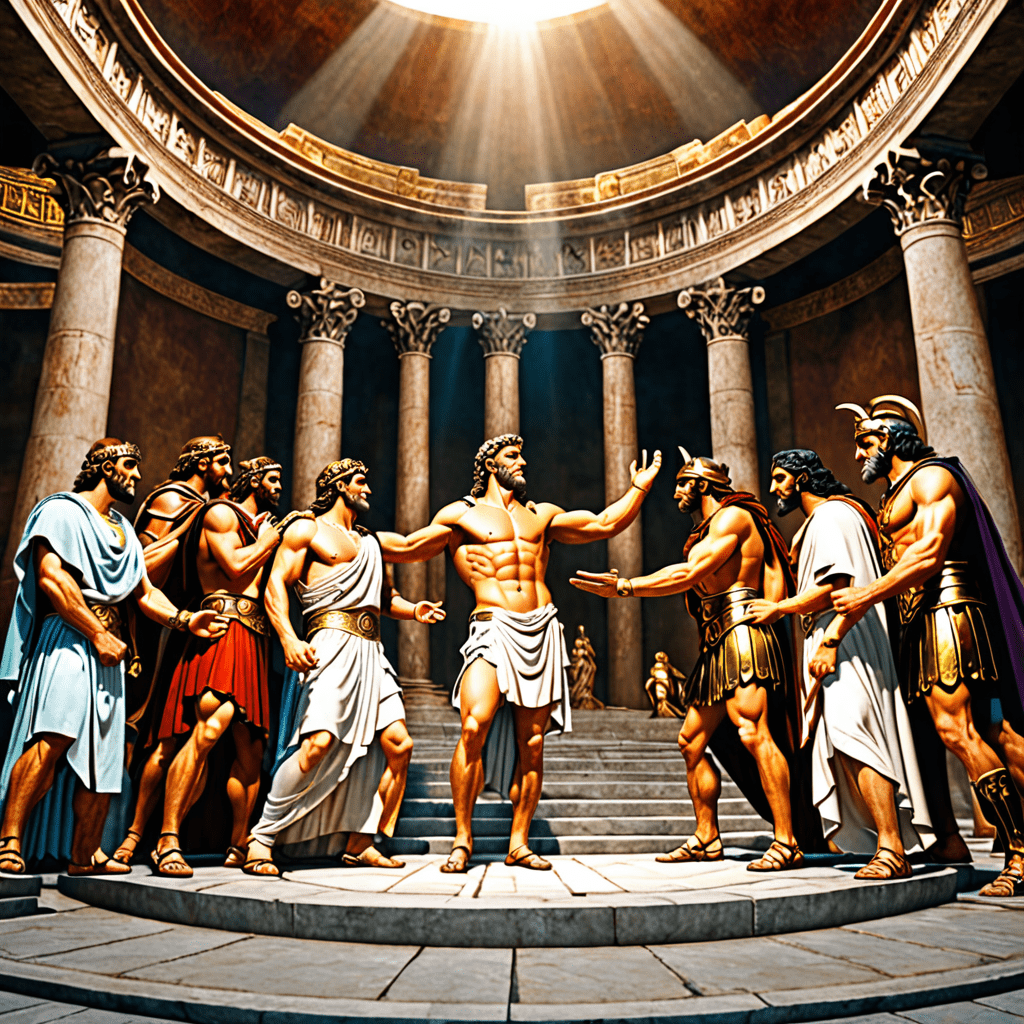The Magic of the Chalice: 7 Artifacts That Hold Divine Powers
Introduction: The Allure of Sacred Artifacts
Throughout history, artifacts have captivated human imagination, symbolizing the intersection of the sacred and the mundane. Across various cultures, these items have been revered for their ability to connect the earthly realm with the divine. The significance of these artifacts often transcends their physical form, embodying the beliefs, rituals, and histories of the societies that cherish them.
Among these sacred items, the chalice holds a particularly prominent place. In mythology and religion, it has come to represent not only communion and sacrifice but also a profound connection to divine grace. This article will explore the chalice and six other remarkable artifacts, delving into the legends and divine powers attributed to each.
The Chalice: A Symbol of Divinity and Connection
The chalice, often associated with religious ceremonies, dates back to ancient times. In many cultures, it serves as a vessel for sacred liquids, embodying spiritual nourishment and connection to the divine. In Christianity, the chalice represents the blood of Christ, central to the Eucharist and symbolizing sacrifice and redemption.
Notable chalices throughout history, such as the Cup of Christ or the Goblet of Fire, have enriched their narratives with layers of meaning:
- The Cup of Christ: Believed to be used during the Last Supper.
- The Holy Grail: A legendary chalice sought by many knights and adventurers.
The stories surrounding these chalices highlight their importance in spiritual practices and their role in connecting humanity with the divine.
Artifact 1: The Holy Grail
The Holy Grail, perhaps the most famous chalice in history, is steeped in legend and mystery. Its origins can be traced back to various sources, including Arthurian literature and Christian texts. The Grail is often depicted as a vessel that holds miraculous powers, capable of providing eternal life or healing to those who possess it.
In Arthurian legend, the quest for the Holy Grail symbolizes the pursuit of divine knowledge and spiritual enlightenment. Knights like Sir Galahad embarked on perilous journeys to find the Grail, representing the ultimate achievement of purity and grace.
Scholars and theologians have debated the Grail’s significance, suggesting it serves as a metaphor for the soul’s longing for communion with the divine. The Grail’s allure continues to inspire countless stories, films, and artworks, cementing its place as a powerful symbol of faith and ambition.
Artifact 2: The Veil of Veronica
The Veil of Veronica is a revered relic in Christian tradition, said to bear the image of Christ’s face. According to legend, Veronica was a compassionate woman who offered her veil to Jesus as he carried the cross to Golgotha. When he wiped his face with the cloth, his image miraculously appeared on the veil.
This artifact is believed to possess healing properties and has inspired deep faith and devotion among believers. It stands as a testament to compassion and the profound connection between humanity and the divine.
When compared to other religious relics, the Veil of Veronica holds a unique position. While many relics focus on physical remains, the veil emphasizes the personal encounter between the divine and the individual, making it a powerful symbol of faith.
Artifact 3: The Staff of Moses
In the biblical account, Moses’ staff is a potent symbol of authority and divine power. Used to perform miraculous deeds, such as parting the Red Sea and bringing forth water from a rock, the staff represents God’s guidance and intervention in human affairs.
Throughout the scriptures, the staff serves as a reminder of faith, obedience, and the importance of divine assistance. Its legacy continues in religious texts and modern interpretations, symbolizing the potential for human agents to effect change through faith and divine support.
Artifact 4: The Shroud of Turin
The Shroud of Turin is a linen cloth that bears the image of a crucified man, believed by many to be Jesus Christ. The shroud’s controversial history includes debates over its authenticity and the methods used to create the image. Scientific studies have yielded various results, with some suggesting it is a medieval forgery, while others argue for its authenticity based on historical and forensic evidence.
For many believers, the Shroud of Turin serves as a profound symbol of resurrection and divine sacrifice. It raises questions about faith, science, and the nature of miracles. The shroud’s enigmatic presence continues to inspire devotion and pilgrimage, as it embodies the mystery of Christ’s suffering and triumph over death.
Artifact 5: The Ark of the Covenant
The Ark of the Covenant holds immense historical and religious significance within Judaism and Christianity. According to biblical accounts, it housed the tablets of the Ten Commandments and represented God’s presence among His people. The Ark was said to possess extraordinary powers, capable of bringing victory in battle and divine wrath against those who disrespected it.
Throughout history, the Ark has captured the imagination of many, leading to quests for its location and further exploration in art and culture. Its influence can be seen in various works, from Indiana Jones films to religious texts, symbolizing the intersection of faith, power, and divine mystery.
Artifact 6: The Philosopher’s Stone
The Philosopher’s Stone is a legendary substance in alchemy, believed to possess the ability to turn base metals into gold and grant immortality. While it may not hold religious significance in the same way as other artifacts, its lore has fascinated seekers of knowledge and wisdom for centuries.
Literature and popular culture have embraced the concept of the Philosopher’s Stone, embedding it in stories that explore the human condition and the quest for perfection. Its allure lies in the promise of transformation, embodying the desire for transcendence and understanding.
Artifact 7: The Ring of Solomon
The Ring of Solomon is steeped in legend, attributed to King Solomon, known for his wisdom and magical prowess. The ring is said to grant its bearer the ability to command demons and communicate with animals, symbolizing the ultimate control over nature and the supernatural.
This artifact has found its place in folklore, representing the quest for knowledge and power. Its influence extends into modern magical tales and literature, where it continues to inspire stories of wisdom, authority, and the complexities of human desires.
Conclusion
The artifacts explored in this article, from the chalice to the Ring of Solomon, embody the human quest for understanding the divine. Each item carries with it a unique history, a story of faith, and a representation of the aspirations and fears of humanity. As we delve into these sacred relics, we are reminded of our own desires for connection, transformation, and the eternal mysteries that lie beyond our grasp.



